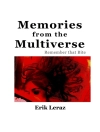“Everything that’s happening to us—yes, everything—is to be regarded as a lark. See? This is my last word. This. Is. Going. To. Be. A. Lark.”
It’s 1919, and Jane Quested and her cousin Lucilla are pulled suddenly from school by their guardian, who sets them up in a cottage on the fringes of London and informs them (by letter, since he’s already fled) that he’s gambled away their inheritance but is leaving them the house and £500 to carry on with. Lucilla is disheartened, but Jane is certain it will be a lark.
With the help of a handsome man, a classic example of a “capable woman”, and a war veteran with a green thumb, the two unflappable young women set up a market garden, which develops into a guest house, which develops into—well, you’ll have to read and see. It’s true they have some difficulties as businesswomen, not to mention with housekeeping, but this is ultimately a tale fully living up to its title.
Forgotten for decades, despite Nesbit’s fame as a children’s author, her final novel for adults, first published in 1922, is a delight that’s ripe for rediscovery. This new edition includes an introduction by Charlotte Moore.
“An economy of phrase, and an unparalleled talent for evoking hot summer days in the English countryside.”–Noel Coward
เกี่ยวกับผู้แต่ง
Edith Nesbit was born in 1858 in Kennington, Surrey (now part of Greater London). Her father died before her fourth birthday, and the family then lived at numerous addresses in England and mainland Europe for several years. When Nesbit was seventeen, the family moved back to London.
Nesbit married Hubert Bland in 1880. They had five children, four surviving to adulthood. On 20 February 1917, three years after Bland died, Nesbit married Thomas Tucker.
Nesbit was a follower of William Morris and she and Bland were among the founders of the Fabian Society in 1884. They also jointly edited the Society’s journal Today.
Her fame today rests primarily on her novels for children, but she was also the author of ten adult novels, including The Lark (1922), as well as horror stories and other short fiction.
E. Nesbit died in 1923, and was buried in the churchyard at St. Mary in the Marsh, Kent.












